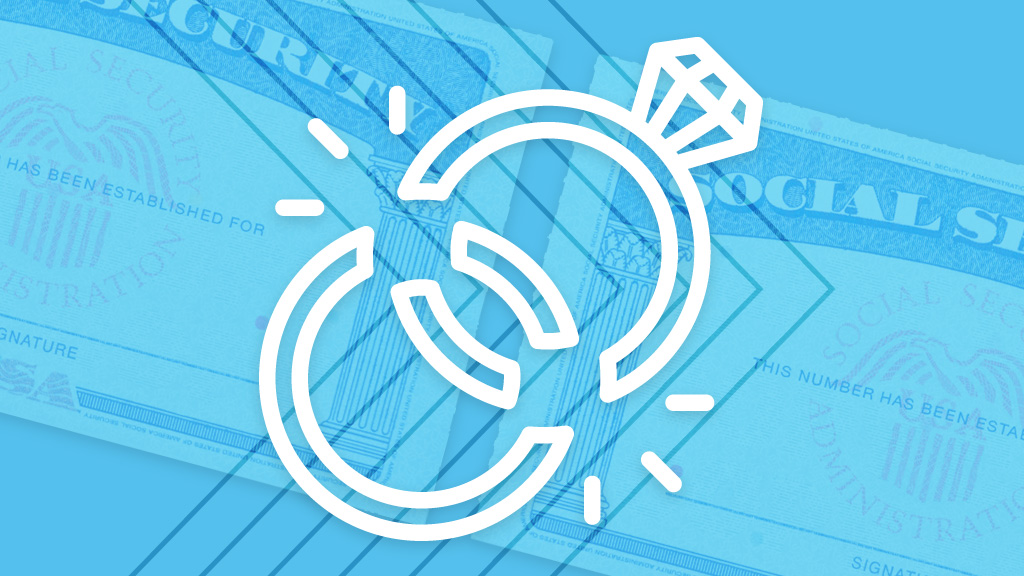A Social Security Secret: Divorced Spousal Benefits

We usually think of the end of the financial story for divorcing spouses as the decree detailing their financial settlement – the division of assets, alimony settlement and child support terms.
But, even years after a divorce, Social Security has some options for financial support that revert to the years a couple was married.
Let’s dive in!
Who can file for spousal benefits after a divorce?
A divorced person can collect Social Security benefits based on an ex-spouse’s earnings record if they:
- Were married for at least ten years.
- Reached age 62.
- Did not remarry.
- Are eligible for a primary insurance amount (PIA) from Social Security that is less than one-half of the former spouse’s PIA.*
If you meet these criteria, you are entitled to benefits on a former spouse’s record any time after the divorce if the ex-spouse has already applied for benefits.
What if my ex-spouse hasn’t filed for benefits yet?
If you meet all the criteria above and have been divorced for at least two years, you are, in Social Security lingo, an Independently Entitled Divorced Spouse (IEDS). As an IEDS, you can file for divorced spousal benefits through the Social Security Administration (SSA) no matter if your ex-spouse has filed for benefits yet.
What if I don’t qualify as an IEDS?
You can still file for divorced spousal benefits after your former spouse files for their own benefits or when your magic IEDS two-year divorce timer is up.
Are there any extra filing options available to me because I’m an IEDS?
Yes, a few unique filing options are available once you attain IEDS status. If you’ve reached your full retirement age and were 62 before Jan. 1, 2016, and your former spouse is at least 62 years old, you can file a restricted application for spousal benefits.
A restricted application allows applicants to choose one type of benefit they want to receive, even when they are eligible for multiple benefits. So, with a restricted application, you can file for divorced spousal benefits and accrue Delayed Retirement Credits (or DRCs, which max out at age 70) before you file for your retirement benefits.
If both ex-spouses are eligible to file restricted applications, they can concurrently file against each other’s records simultaneously. Married couples aren’t eligible to do this!
Another benefit of IEDS status is that your spousal benefits are not reduced if your former spouse begins taking their benefits but has them reduced because of the earnings test.** This is an advantage that married spouses don’t have.
Will I receive Social Security survivor’s benefits when my ex-spouse dies?
Divorced spouses, both IEDS and non-IEDS, are entitled to divorced survivor benefits at the death of their former spouse. To qualify, you must have been married for at least ten years, are at least 60 years old (or age 50, if disabled), and if you remarried, you didn’t do so before you turned 60.
In this situation, deemed filing will not come into play. You can file for divorced survivor benefits only while allowing your own retirement benefits to grow by accruing as many DRCs as possible.
It’s important to note that there are different FRAs for survivor benefits than for retirement benefits. Knowing your survivor FRA is important to avoid a reduction in your survivor benefits, if possible. You can find the survivor FRA chart on the SSA’s website.
The bottom line is this.
Social Security rules are complicated. Are you divorced and trying to figure out your best filing strategy that earns you the maximum in benefits? The Social Security Administration will answer your questions, but they do not provide advice. It’s wise to consult a financial advisor armed with software that, based on your situation, can show how much you’d earn in various filing scenarios.
* A terminology refresher: Primary insurance amount (PIA) is the term that describes what anyone eligible for Social Security benefits is entitled to upon reaching normal, or full, retirement age. Full retirement age (FRA) varies depending on someone’s birth month and year. Look yours up at ssa.gov.
** Social Security withholds benefits if someone collecting them is below normal retirement age and has earnings that exceed a limit set annually by the government from continuing to work. This is what the earnings test refers to. Once someone reaches normal, or full, retirement age, their earnings do not affect their Social Security benefits.
Read the original post on TheStreet here.
Monthly insights from our Chief Growth Officer, Jack Sharry
Get exclusive insights and interviews from around the industry

 By
By 




